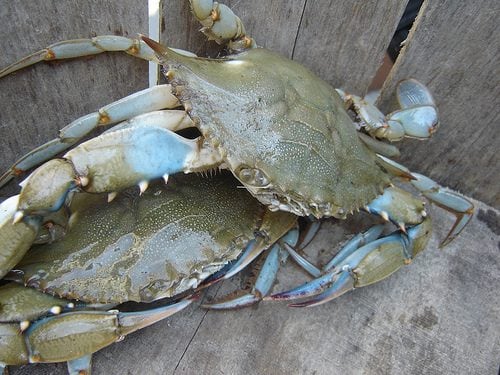Italian coasts were invaded by the alien blue crab, a threat to ecosystems: how to recognize it
In recent years, populations of blue king crab, an alien species from the Atlantic, have exploded in Italy. What are the risks?
As specified by the Higher Institute for Environmental Protection and Research (ISPRA) in a comprehensive infographic, in Italia today they live beyond 3 thousand alien species organisms originating from other countries - that is non-native - which can have a significant impact on the balance of delicates native ecosystems.
Because of the commercial exchanges increasingly numerous and capillary internationals, in concert with the "tropicalizing" effect of climate changes which have made our country and the Mediterranean Sea more hospitable to certain species, only in the last ones 30 years have alien organisms increased by 96 percent.
Among the species that worry most from an ecological point of view, there is the so-called blue crab (Callinectes tasty), Also known as blue king crab o blue crab. The first sightings of this crustacean in our country date back to the late 40s of the last century in the Grado area, in Friuli Venezia Giulia but only in recent years has it been the protagonist of a real population explosion, especially along the coasts of the Adriatic.
The species was also recently sighted in Mar Ligure and above all on coasts of Lazio, with various presences ascertained in Ostia, Ladispoli, and other coasts of Lazio. Here's how to recognize blue king crabs and why they are classified as "invasive aliens" that threaten our ecosystems.

How to recognize a blue king crab
The blue king crab is a decapod crustacean native to the Atlantic Ocean, more precisely to the eastern coasts of the American continent, where the species is widespread and has high commercial importance. It is considered a real delicacy and the selling prices are significant, compared to tens of thousands of tons of crabs collected each year. As indicated in an information leaflet of the "Giornale di Marinai", produced in collaboration with ISPRA, the blue crab is classified as an "infralittoral coastal species that lives up to 35 meters deep".
The crustacean can survive in waters with temperatures between 3 e 35° C and with a significant salinity range. Its name is due to the blue color of the claws in males (they are red in females) and legs; the general coloring is instead generally greenish-gray. It is a large crab since the carapace can go beyond 23cm wide and 15 in length. The margins on the sides of the eyes are serrated and there is a large spike at the right and left apexes of the "armor".

How it arrived along the Italian coast
It is not clear how the blue king crab arrived along the coasts of Italy and other countries bordering the Mediterranean Sea, but larvae e adults have likely been freed from the ballast water of the ships. Once released into the sea they would have found suitable climatic and ecological conditions, allowing adaptation and stabilization.
The recent demographic boom could be linked to increasingly higher water temperatures, bearing in mind that, as indicated in the Journal of Sailors, the larvae need a temperature of at least 15 ° C to develop normally. Females can lay up to over 2 million eggs based on size.
The largest plant in the world is a seagrass that lives in Australia

Because it is a threat to Italian ecosystems
The blue king crab is an efficient predator that devours practically all kinds of small prey that it manages to capture with its pincers, come on gastropod mollusks ai bivalve mollusks such as mussels, clams, cockles, and others, passing through others shellfish, small fish coelenterates like the jellyfish, echinoderms, worms and so on.
The significant size makes it a formidable enemy for many native species, including our crabs. The risk is greater for native organisms already in trouble for other reasons, such as the aforementioned climate change. Often fishermen find blue crabs on nets as they feed on trapped prey.
The impact on our ecosystems is not yet fully assessed but biologists are rather concerned about the presence of the blue crab; for this reason they recommend catching as many specimens as possible, also emphasizing that meats are considered a delicacy in the kitchen. Although catches are on the rise, however, human intervention could only scratch their presence.
“It is a species with an explosive, exponential dynamic. So we expect large numbers, regardless of whether we fish them or not ”, Corrado Battisti of the Centro Mare Radio explained a few weeks ago, about the sightings at the Palude di Torre Flavia natural monument near Ladispoli.



